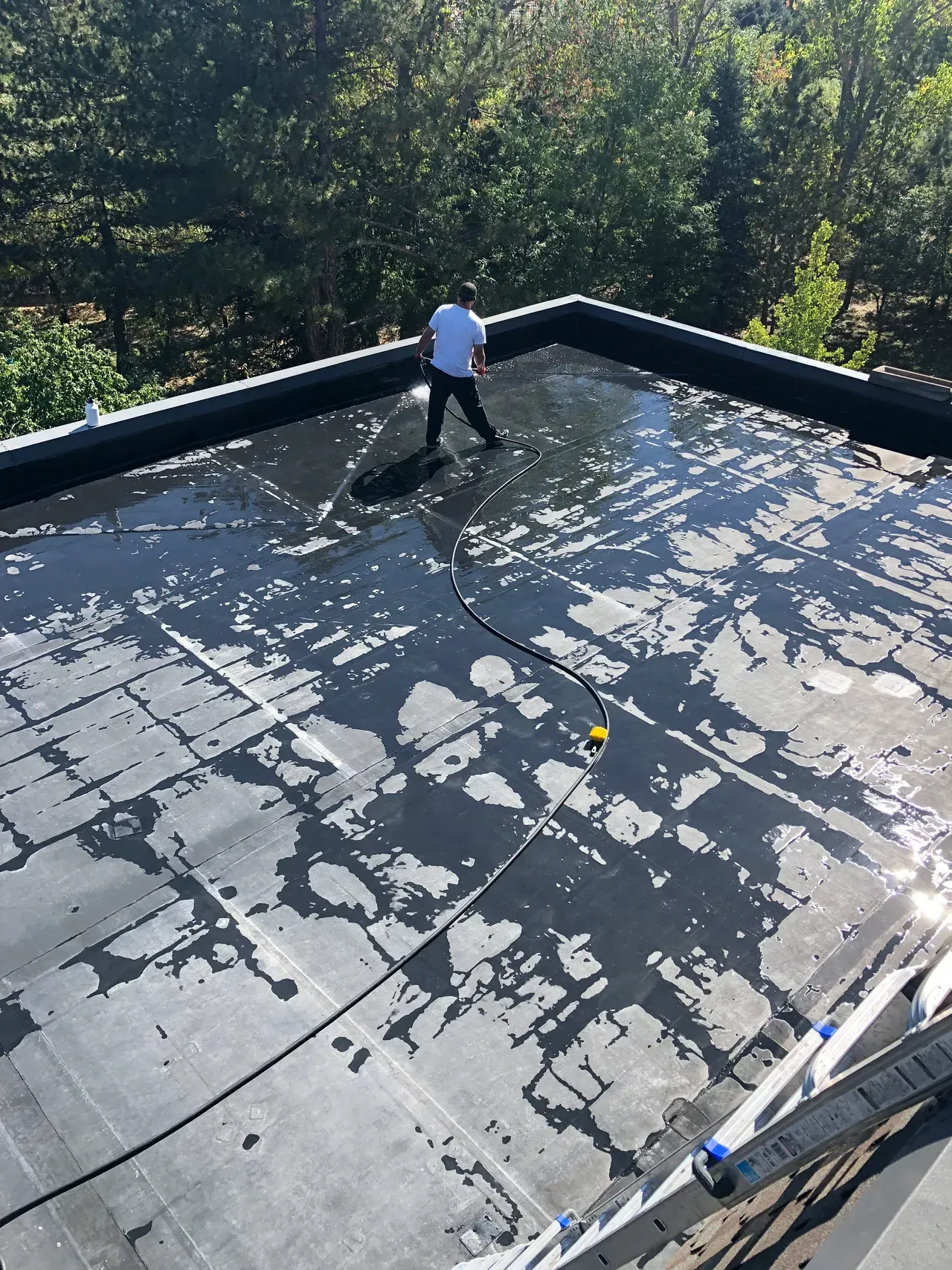News & Blog

By Brandon Schwartz
•
September 17, 2018
The process of replacing your roof can be lengthy, but here’s a bit of good news: The insurance claim process for a new roof is much more straightforward than many large home improvement projects. Despite the physical prominence of your roof, a quality roofer will help you plan and execute the roofing process. The insurance claim process for a new roof comes down to these ten steps. 1. Get your roof inspected by a roofer If you are looking for a new roof but have yet to contact your insurance company or a professional roofer, you are at step one in the process. The first action item on your end is to have a roofing professional visit your home and inspect the roof. He or she will do a thorough walk-thru of everything -- assessing damage caused by weather, age, or wear and tear, and will take note of any irregularities or signs of concern. The roofer will then present their findings to you in a concise manner that is easy to understand. This is important because you should be able to trust your roofer to be on your side throughout the entire process, making it important to have your roof inspected by a professional roofer and not only your insurance company, which is going to try and pony up the least amount of money possible. While most licensed and insured roofing companies will provide a free inspection, some may try to lure you into signing a contingency contract. This essentially puts into writing that you plan to use that company to replace your roof, so you don’t want to do this unless you are 100% sure this is the case. If you plan to get more than one quote or aren’t sure that you trust a certain company, do not sign a contingency contract. At Colorado Contracting Unlimited, we specialize in providing honest opinions and feedback to customers. If you’ve been hit by a hail storm, we’ll let you know the extent of damage and whether or not a new roof is the right move at this time. Many factors go into this decision, from which direction the majority of your roof faces to how old it is, what it’s made of, and much more. 2. File the claim Once you’ve had your roof inspected, It is important to file the claim quickly in order to speed up the process. Call them to file, and be sure to write down the claim number. After a storm, you likely have between 30 days on the short end and up to two years on the high end to get your clam filed. How long you have depends on your insurance policy as well as what type of damage has occured. If you aren’t sure how long your policy allows, call them or do a bit of research on their website to find out. When filing the claim, be sure to note the date of the storm. It also helps to take as many pictures of the roof damage as possible to hold onto as evidence of the damage, in case they ask for further verification at any point during the process. 3. The adjuster comes out After your claim is filed, the insurance company will send an adjuster to your home to analyze the roof and confirm what your insurance will and will not cover. If you let the insurance agency know the name of your roofing contractor and their phone number, they can coordinate the adjuster’s visit for you. You shouldn’t need to do much at this stage other than coordinate with the roofing contractor and adjuster to make sure your appointment happens as scheduled. Remember, however, that you are the customer and it is the insurance company’s responsibility to uphold your policy. Be sure the adjuster is aware of major damage and recommendations made by the roofing company, otherwise they may not cover some or all costs down the line. 4. Review paperwork with contractor The adjuster will take his or her findings back to the the insurance company and will then send their findings to you about 2 weeks later. This will include a scope of loss (an itemized run-down of damages they will cover) and in many cases, a check for the initial deposit payment to the roofing contractor. The contractor will go over the scope of loss, determine what work needs to be done, and will prepare the necessary paperwork to begin the restoration phase. At this point, you will want to review the paperwork with your chosen roofing contractor to ensure that all proposed work will be covered by the insurance company. 5. Decide on materials and sign a contract The next step is to make a final decision on the style and materials for your new roof. Your roofing contractor can walk you through recommendations and talk prices, which are important because the insurance company will generally agree to cover a set amount and if your roof exceeds that amount, you’re stuck with the remaining bill yourself. Also keep in mind that even after you’ve chosen the materials and the order has been submitted, you shouldn’t pay any money until after the material for your new roof is delivered and onsite, even if you’ve already received a check from the insurance company. This is the true signal that it’s go time -- and that you are working with a roofing company in Denver that you can trust. Once the material arrives, you will pay what is essentially a deposit to the roofer. Only pay enough to cover material, which is typically about half of the total cost of the roof. You will pay the remainder after the project is completed. 6. Supplementary process During the supplementary process. your roofer work with your insurance company to make sure everything involved in your new roof -- from materials to labor -- will be paid for. Common questions or concerns from insurance companies at this point generally surround code items, unforeseen site conditions that weren’t noted in the original claim, and anything else that the adjuster forgot or overlooked during the adjustment period. The roofer is your closest ally in this process. He or she has your best interest in mind and will handle any back and forth with insurance. You want the insurance company to come to an agreement with the roofer on what they're going to pay before the work starts, that way there aren’t any surprises at the end -- and this is much easier when you have a seasoned pro going to bat for you. 7. Your new roof is built Ironically, this step is the one in which customers often feel they should be doing something to help the process. But the biggest thing you as the homeowner can do while the roof is being built is to be patient. No one likes having workers on top of their house banging away, but the end result is worth a short period of inconvenience. While the process should stay on schedule and be done before you know it, uncontrollable factors like weather and material shortages occasionally come into play. Your roofing contractor will keep you informed of how the process is proceeding and if any delays are expected -- meanwhile, you can relax. 8. Send invoice to insurance company Once your roof is built, it’s time to collect the rest of the money from insurance to pay your remaining balance. They will send a check to your home, and you will then present the check to the roofer. If you have a mortgage on your home, the insurance company typically writes the checks as co-payable to both you and your mortgage company, to satisfy their need and right to know about about damages incurred to the property. Don’t be alarmed by this, it’s just standard practice -- the mortgage company should be silent throughout the roofing process. 9. Pay final payment to roofer The depreciation check from the insurance company will come two weeks after invoice is sent - this is when you pay the roofer the final amount owed. Your new roof is installed and hopefully looks great and meets (or even exceeds) your expectations, and this final payment signifies successful completion of the process. 10. Get warranty information for your new roof Once the roof is installed and the contractor has finished cleaning up, you’ll certainly be ready to get your home back to its normal, quiet self. The time is finally right to do so! Just make sure you have a copy of all warranty information for your new roof. These can save you big bucks over on insurance premiums over the years when it comes to fire rating, algae rating, and more. There should, in most cases, be two warranties: One warranty on shingles and one on workmanship. You’ll need both of these in order to provide all necessary information on your insurance agent to get all of the discounts that may qualify for -- so keep them filed with the rest of the important paperwork for your home. Now that you have a guide to the insurance claim process for a new roof, you’re ready to get the process started! Our trained team of professionals at Colorado Contracting Unlimited is here to help you with all of your roofing needs in the Denver metro area. Contact us here to get a free quote.

By Brandon Schwartz
•
September 14, 2018
New technologies abound in the roofing industry. This is exciting for homeowners, largely because today's roofing options have expanded and the choices for your new roof are more eco-friendly and durable than ever. Stronger and longer-lasting roofs not only keep your home protected, they keep excess shingles and other roofing material out of landfills -- keeping both your roof and your home safe and more eco-friendly. No roofing material embodies this mindset more that the Polyurethane roofing shakes from CeDUR. This Aurora, Colorado brand has developed highly versatile long-life shingles that resemble wood roofing shakes, but are much more durable. To help you understand what a CeDUR roof is and why it may be the best option for your home, Colorado Contracting Unlimited worked with the company to answer customer's most common questions.
Tell us about your roofing project
Service Areas:
Payment Methods:



